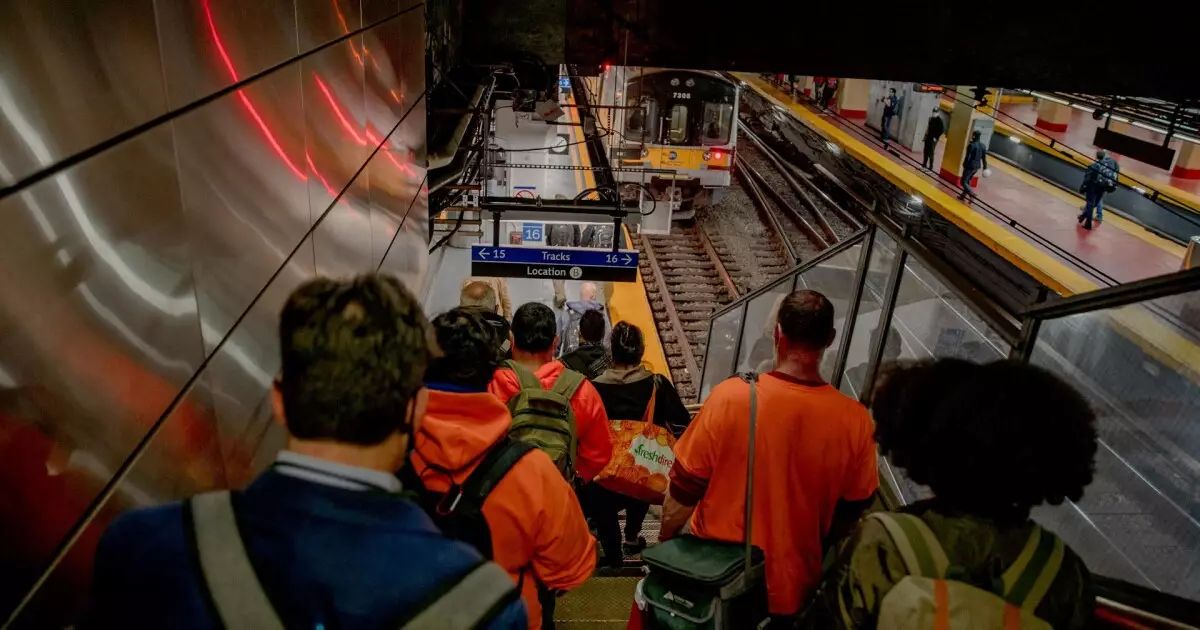The recent shakeup surrounding the makeover of New York’s Pennsylvania Station presents a gripping crossroads for American infrastructure policies. With a staggering budget of $7 billion at stake, the Trump administration’s decision to strip the Metropolitan Transportation Authority (MTA) of its leadership role in the endeavor, transferring the reins to Amtrak instead, has stirred up considerable debate. While Governor Kathy Hochul heralds it as a monumental victory for New Yorkers that promises substantial savings, one must question the necessity of such a political maneuver, especially in light of ongoing tensions surrounding New York City’s mass transit system.
Many will laud the federal government stepping in to oversee the project as a critical intervention against the perceived inefficiencies of the MTA. However, can the federal government, led by figures like Secretary Sean Duffy, genuinely execute an ambitious plan without being bogged down by political interests and the quagmire of bureaucracy? This shift raises eyebrows, as the administration isn’t merely stepping in to assist but assuming control, raising questions about mismanagement and the associated costs that such a drastic change may incite.
A Cut Here, A Cut There—Who Really Benefits?
The announcement of funding cuts from the federal grant, supposedly designed to save $120 million, is portrayed as a symphony of fiscal responsibility. Yet, when examining the broader implications, one wonders who truly profits from these cuts. Hochul’s apparent relief at the federal intervention overlooks the potential ramifications for long-term project viability and sustainability. The arbitrariness of slashing funding reflects a troubling trend in governance where superficial savings could compromise the integrity of essential infrastructure.
Further, the concept of saving $1.3 billion that would have fallen on New York taxpayers merits skepticism. Are these savings feasible if the project encounters delays or cost overruns further down the line? The MTA’s leadership claims it has recently improved operations, asserting its competence in managing capital projects. These narratives clash sharply against the backdrop of a federal government eager to take over, as criticism mounts against the MTA for its spending practices.
Conflict and Congestion: A Broader Context
This reshuffling is taking place amid an escalating conflict between the Trump administration and MTA leadership over congestion pricing in Manhattan, adding further complexity to an already fraught situation. The deadline imposed by the federal government to halt tolls appears more than just a directive; it is a form of political leverage in a broader struggle between Washington and New York City’s local governance. Is this really the best backdrop against which to conduct significant infrastructural change, or is it merely utilizing public sentiment for political gain?
Leaving aside the immediate financial implications, we must confront the underlying narrative of the administration’s stance against “reckless spending.” While cutting costs is undoubtedly a noble goal, the ongoing dialogue about transit crime and MTA management inefficiencies suggests that any real improvement requires more than just a reallocation of power.
The Character of Infrastructure Development
The ambitious goal of creating a new, mixed-use transit hub with modern amenities symbolizes not just a physical transformation but reveals deep-seated character flaws within current infrastructure development strategies. As buildings rise, fueled by billions in taxpayer dollars, New Yorkers remain on the edge of their seats, yearning for a transit experience that matches the vibrancy of the city itself. However, with political skill-playing overshadowing practical governance, it casts a shadow over the hoped-for transformation of Pennsylvania Station.
The irony of transforming Penn Station into a beacon of progress while amidst political turmoil can’t be lost on those who navigate its halls daily. The question moving forward should not merely be about who commands the project but rather how we seek to create a system that is not just functional but exemplary. For a structure serving millions, it should embody New York’s resilience and ambition rather than represent a politically divisive agenda.
In a world where infrastructure discussions rapidly devolve into politicized narratives, it’s worth contemplating what we truly value as a society: efficiency or ideology, progress or partisanship. Pennsylvania Station’s revamp, for better or worse, stands as a litmus test for the future of American urban infrastructure management at a time when we can ill afford oversights and missteps.

